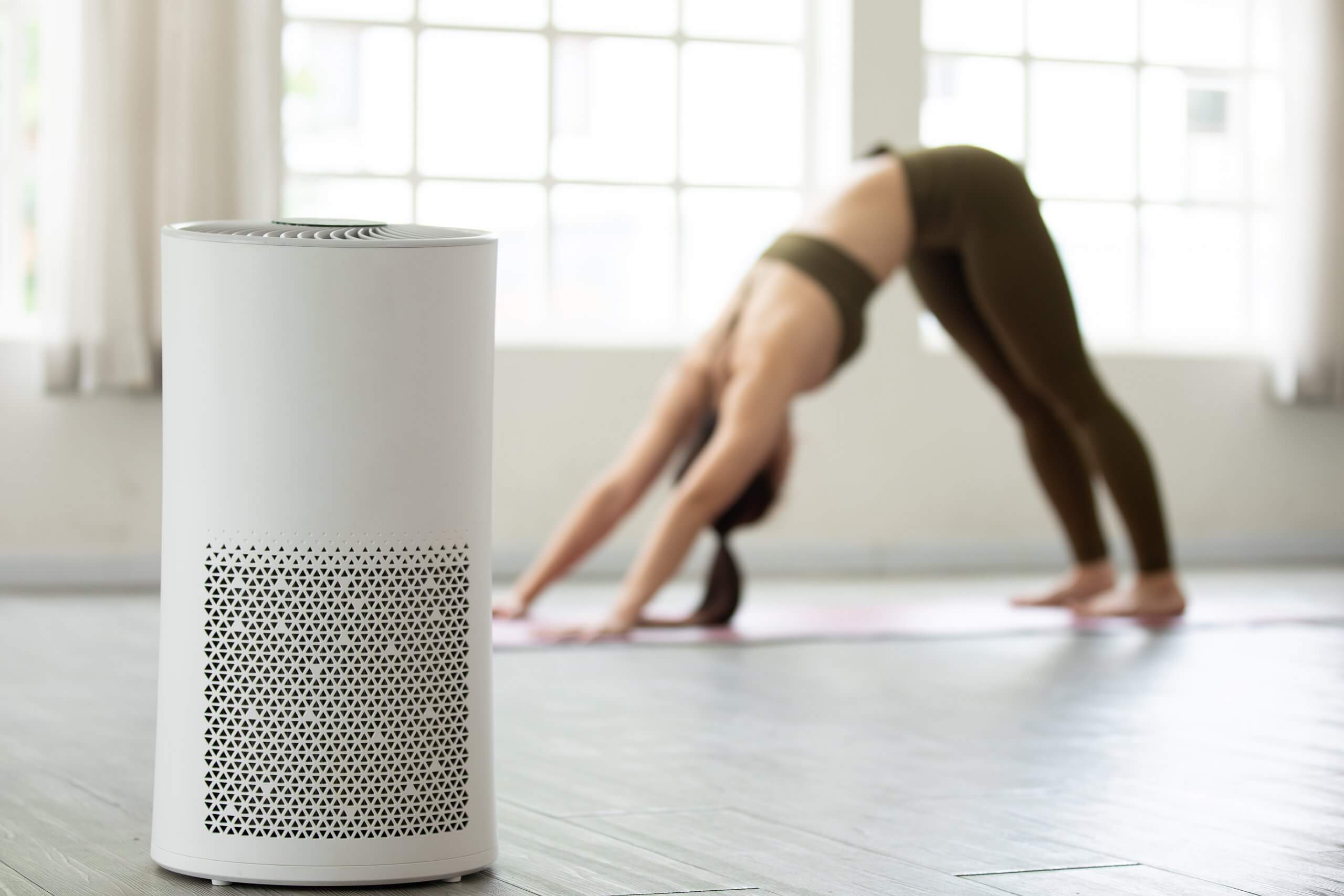Removing bugs from your backyard and purifying the air in your home are two surprisingly similar concepts. To get rid of pesky pests, you invest in some kind of bug zapper or deterrent to place outside and wait for bugs to approach. For cleaner indoor air, you install an air filter that sits within your home’s HVAC system and captures air pollutants as they pass through. Both are, therefore ‘wait and capture’ methods, or passive solutions. And while your home air filter is absolutely necessary and can be beneficial to indoor air quality, it’s also a first step to solving the issue at hand. When it comes to indoor air quality, a passive air cleaning solution should be accompanied by an active air purification method to achieve the best results.
What Is Air Purification?
Air purification is the process of removing air pollutants from the air in order to improve indoor air quality. Indoor air pollutants include dust, pollen, dander, mold spores, gases, bacteria and viruses. With that in mind, the importance of air purification is self-explanatory! Breathing in air pollutants affects our bodies in a variety of ways. Symptoms may be mild, such as coughing, sneezing and itchiness. Or, other symptoms can be more severe, ultimately adversely affecting the respiratory, reproductive, nervous and cardiovascular systems. In order to avoid the damage caused by air pollution, it’s important to understand and implement effective and efficient air purification methods.
The Difference Between Active and Passive Air Purification
First, it’s important to understand that in IAQ solution terms, active air purification purifies the air whereas passive air purification cleans the air. Hence, the more appropriate term is passive air cleaning. The main difference between active and passive air purification solutions is seeking out rather than waiting for air pollutants.
 Air Purification: A whole-home active air purifier does not replace your home air filter, rather it’s an add-on IAQ solution. So, how to tell if your home air filter is enough or if you need an active air solution? Find out here →
Air Purification: A whole-home active air purifier does not replace your home air filter, rather it’s an add-on IAQ solution. So, how to tell if your home air filter is enough or if you need an active air solution? Find out here →How do active air purification devices find air pollutants? An active air solution is ultimately adding something to the air to capture and remove pollutants. A common example is bipolar ionization technology. Bipolar ionization supplies positive and negatively charged ions where they attach to air pollutants. This in turn creates larger heavier particles, which means it’s easier for air filters to capture contaminants, or the heavier pollutants fall from the air.
Active Air Purifying Methods
Active Air Purification Technology
Active air purifying methods include ionization and photocatalytic oxidation technologies. These methods are mobile, actively seeking out air pollutants. Most whole-home active air purifiers utilize bipolar ionization to remove air pollutants from every corner of your home. They release cleaning agents that clean the air and create a healthier ambient atmosphere. This is particularly beneficial for allergy and asthma sufferers who are triggered by certain air pollutants.
Passive Air Cleaning Methods
Air Filters
Perhaps the most popular passive air cleaning method is an air filter. In short, an air filter captures air pollutants. There are various types of air filters (e.g., media, washable and pleated). Each filter receives a MERV rating which determines its ability to capture particles. Air filters are found inside your HVAC system ductwork and wait for incoming air to carry air pollutants through the filter. In other words, they are contained making filters a passive air cleaning method.
 High-Efficiency Air Filters: Air filters can help improve indoor air quality, that is, high-efficieny air filters. Your guide to everything you need to know about whole-home air filters and how to make this passive air cleaning method provide cleaner indoor air →
High-Efficiency Air Filters: Air filters can help improve indoor air quality, that is, high-efficieny air filters. Your guide to everything you need to know about whole-home air filters and how to make this passive air cleaning method provide cleaner indoor air →Passive Air Purification Technology
You might think that portable air purifiers are an active air purification method, but the majority of these devices are not. Ionizer or ionic portable air purifiers are an exception. However, most portable air purifiers do not utilize active purification technology. Rather, they rely on air filters. Fans draw air into the machine where the air passes through a filter, removing contaminants and releasing cleaner air. There are various types of air purifiers. Some are more effective than others, but they all share one thing in common: they lack active air solutions. Thus, they are all passive air cleaners.
Stronger Together
It’s important to understand that active and passive air purification methods should be used in tandem. One is not better than the other, as they have different strengths. This is especially true for a whole-home purification solution in addition to your whole home air filter. Or, using a HEPA portable purifier to target a priority area while also using an entire space active air solution. Each technology works to remove air pollutants that cause mild to severe symptoms, drastically improving indoor air quality. When they are paired, the best possible result will be achieved allowing your family to breathe right.




